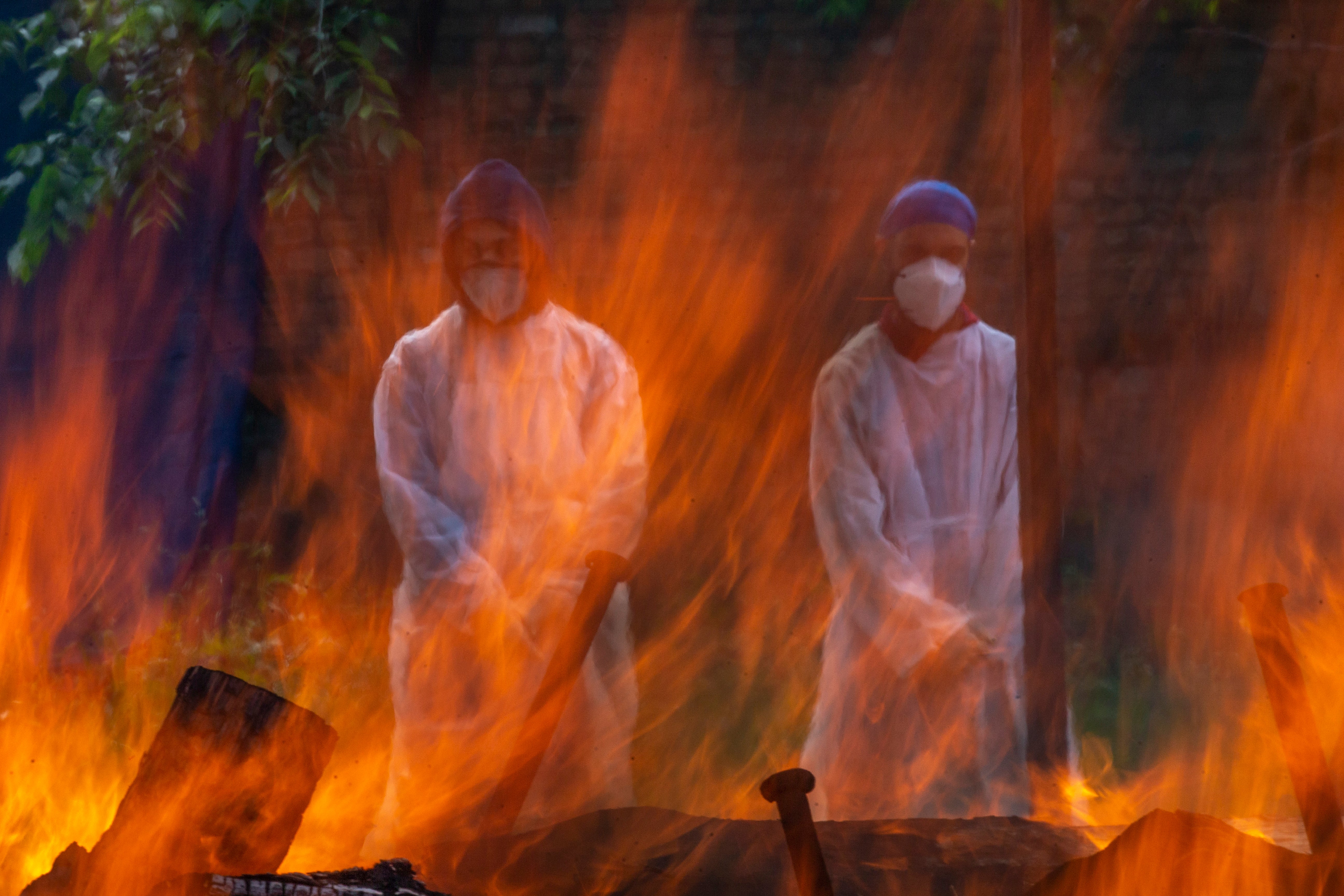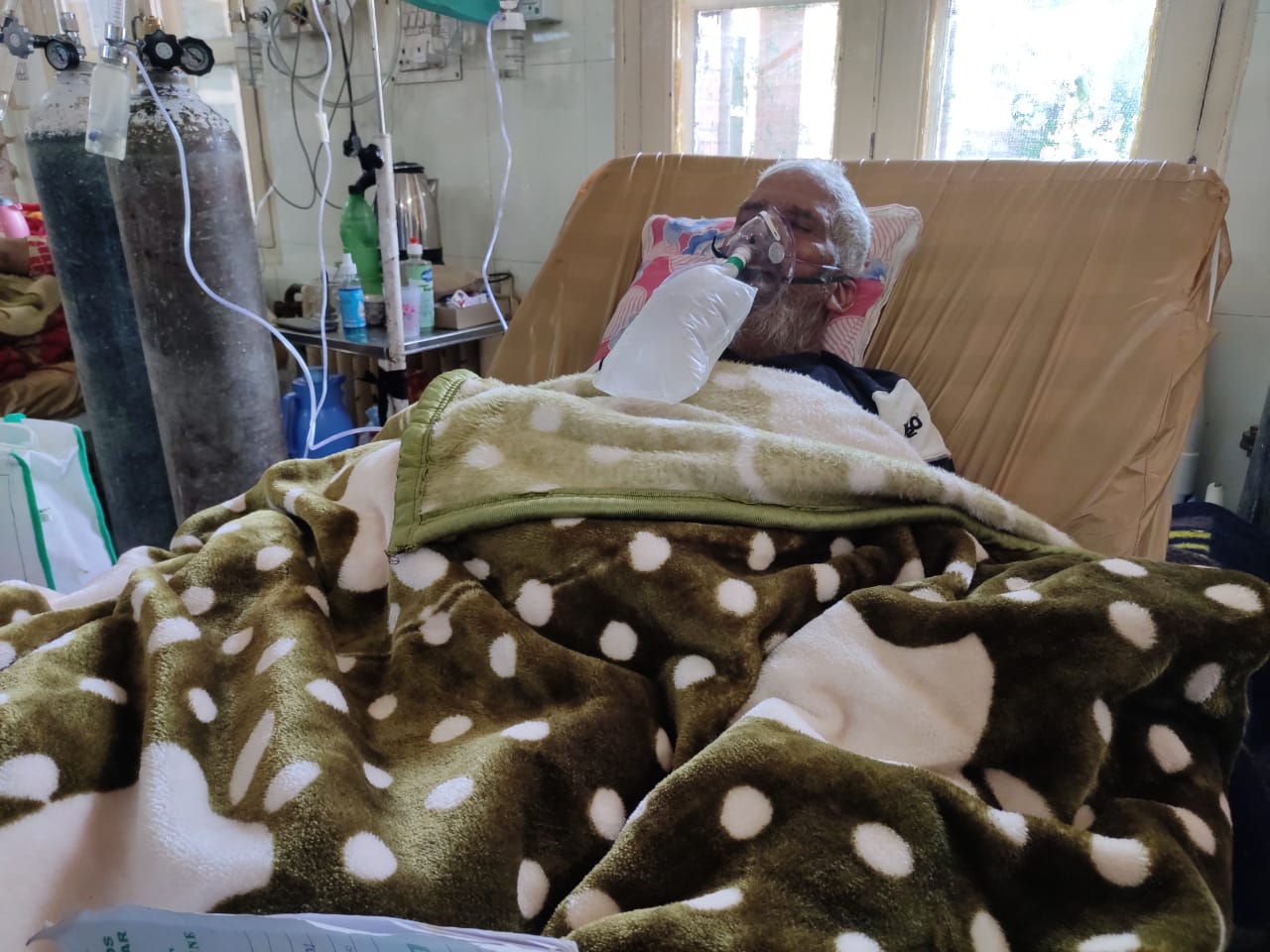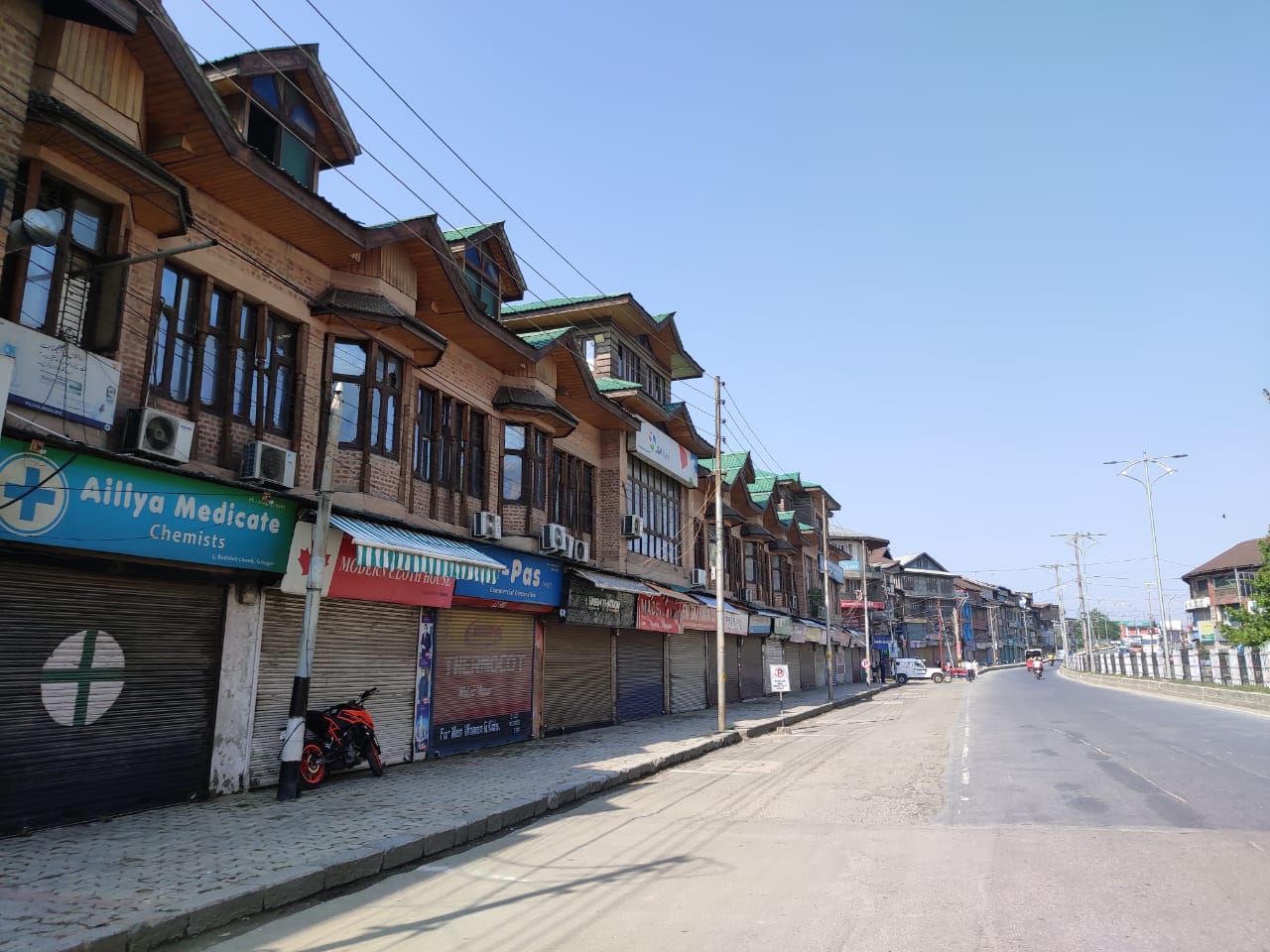The doctors ordered to battle Covid in silence
Possibly enduring the toughest lockdown anywhere in the world, Kashmir’s doctors and patients give a rare look into the buckling healthcare system of the most heavily militarised region on Earth. Namita Singh reports in the first of a series of dispatches from Srinagar


“I don’t want to die right now,” were the last words of 28-year-old Sheikh Sumaira as she gasped for air in a Covid ward in Kashmir’s Shri Maharaja Hari Singh (SMHS) Hospital. On 21 May, after her oxygen levels dipped below 40 and with her family still scrambling to find her an ICU bed, she took her final breath.
Sumaira’s family say she was admitted to one of the biggest and best-equipped government hospitals in Srinagar, the largest city in India’s Jammu and Kashmir, just two days after testing positive for the virus. Yet as her condition sharply deteriorated, doctors said there were no ventilators left and told the family it would be up to them to secure one.
“When her oxygen levels had dipped to 37, the doctors turned her on her stomach and patted her on her back,” her brother Sheikh Shafiq, 29, tells The Independent. “It was a physical process, not a medicinal one. She died minutes later. This is a case of medical negligence.”
The story of Covid devastating families of young and old alike, of a struggle for ventilator beds and essential medical equipment as healthcare facilities are overwhelmed, is being heard across all the rest of India, where more than 300,000 people have lost their lives according to deeply conservative official figures, most of them in the devastating second wave that has ravaged the country.
Like in the rest of India, cases in the erstwhile state of Jammu and Kashmir rose dramatically through April and May, with daily infections rising tenfold to pass the 5,000 mark on 9 May. But unlike the extensive national and international media coverage of the crisis in Delhi and Mumbai, which is now spreading into more rural areas, most people are entirely unaware of the situation in the heavily fortified Kashmir valley.
That is in part because unlike the other states, Kashmir has a gag order in place. An authoritarian diktat passed by Mushtaq Rather, the director of Health Services Kashmir, earlier in May instructs medical staff to “desist” from speaking with journalists.
The direction was passed on the basis “that contradictory and confusing messages are being circulated which misinforms the public and creates unnecessary and avoidable panic”, it claims. The order directs medical superintendents to “initiate strict disciplinary action against anyone indulging in such behaviour” in their respective hospitals.
Read more from the Covid in Kashmir series:
Part 2: Kashmir’s ‘oxygen gag’ prevents good samaritans from helping breathless citizens
Part 3: Calls for India to release Kashmiri political prisoners during devastating second Covid wave
“We are being treated like slaves,” Dr Nisar ul-Hassan, president of the Doctors Association Kashmir, tells The Independent as he slams the gag order. “If a doctor will not do the talking during the pandemic, then who will? Where is the liberty and freedom?
“In the part of the world where I am living, dissent is criminalised to the point where it is like treason,” he says. “How do you expect me to be an efficient doctor and treat my patients properly if I am constantly thinking that if I talk my heart out and say something for the benefit of my patient then I might be punished?
“Communication is the most important thing during the pandemic, because an effective communication strategy can prevent the spread of the virus. But it is only in this part of the world that the doctors are being censored.”
Dr Mohammad Salim Khan, head of the Covid wards at SMHS Hospital, admits the mortality rate in the hospital has gone up by at least four times. “We used to see about one or two deaths a day in the first week of April. Now the daily deaths have gone up to seven or eight a day.”
But he denies a shortage of resources at the hospital, and defends the order to stop doctors speaking out about the situation. “I have the data with me and I can substantiate whatever I see. The decision is just to streamline [communication] so that every hospital has a medical superintendent as a spokesperson.”
Asked about patients’ complaints about their care and healthcare facilities being overrun, Dr Khan is unequivocal. “There is no shortage of ventilator beds,” he asserts.
Yet across the same hospital during The Independent’s visit, there was a patient dying in a general Covid ward in dire need of a ventilator, whose family were being told he wouldn’t get one.
Mohammad Shahban, 60, had coronavirus and bilateral pneumonia. His son, Sahil Wagey, 32, tells The Independent that he was in the emergency ward on the night of 18 May and was moved to the Covid general ward the next day.
“The doctors said that my father needs an ICU bed. But there are none in the hospital,” he says. “In fact, there are no doctors here,” he laments. “The whole night, not one doctor came to check on the patients. And when one senior doctor came, he saw my father from a distance and left.”
Shahban died the same day waiting for an ICU bed. He had been in the hospital for over 16 days.

At the Chest Disease Hospital in Srinagar, another major facility, senior doctors say the gag order can help stop “miscommunication due to social media”. Dr Naveed Nazir Shah, a department head, tells The Independent: “Many wrong things got communicated. These include myths regarding vaccination and things which have been disseminated from different quarters which don’t have any scientific proof.”
But further down the rungs of the medical hierarchy, other doctors are certain the order is designed to suppress genuine information about the scale of Kashmir’s Covid health crisis.
A doctor from Sher-i-Kashmir Institute of Medical Sciences (SKIMS), speaking on condition of anonymity, says: “The order has not come from an elected government of the state, but from the federal government. And the intent does not seem to be aimed at limiting panic, but containing any damning information from getting out.
“If we cannot tell the media that we are running out of essential medical supplies, that we are short on paramedic staff and doctors, then how will things improve?” he asks. “Kashmir is just being ignored. With this [gag] order, we are left pretty much on our own.”
Srinagar and the rest of the Kashmir Valley effectively started its lockdown some six months before the rest of the world – in August 2019, before there was Covid, the Indian government stripped the region of its statehood and special constitutional status, and cut off internet access and freedom of movement as it did so in order to prevent a violent public backlash.
While things improved between the two Covid waves, what is now the centrally-controlled union territory of Jammu and Kashmir returned to strict lockdown on 29 April. It is set to be reviewed from Monday.
The restrictions observed in the erstwhile state are even more stringent than those seen during lockdown across other parts of the country. The roads are deserted and almost every shop is shuttered. There are scarcely any vehicles in sight, mostly parked alongside the footpath. And every few kilometres there is an armed police barricade or barbed wire restricting movement on the road. The barricades keeps changing throughout the day to make them harder to avoid, and only those with a curfew pass are allowed to go through.

Though the Covid situation in Kashmir is not as grim as it was at its peak in the country’s capital Delhi, where people were seen gasping for breath as they waited in queues outside hospitals for a bed, doctors feel that they are working at the very limit of their capacity.
“Right now, I would not say that we are overwhelmed, but we are just working on the brim,” says Dr Shah. Admissions policies have had to get a lot stricter, he says, so they only take the sickest. “We are also seeing a change in the pattern where more people [of different ages] are getting severe to moderate infections. Earlier, the moderately severe cases were observed in those above the age of 50 or 60 and those with co-morbidities.”
Dr Khan feels that the severity of infections may be worsening because there are more aggressive Covid variants circulating in the valley – but again the available information on this falls short due to a lack of genome sequencing.
“We have no information about the mutants circulating in Kashmir. [The researchers] have only isolated a single variant here,” he says, referring to the lesser-known N440K mutation first identified by India in April.
India as a whole is still seeing around 200,000 daily infections, down from a peak of about 400,000 at the end of April. But in Kashmir deaths continue to rise as, Dr Khan suspects, the virus spreads more widely into districts beyond Srinagar city. The mortality rate, he says, “might not peak for another two weeks”.
Dr Hassan describes the ongoing situation in hospitals as a “nightmare”. He says that hospitals are seeing more deaths now in part because people only come to the hospital late on, as a last resort. “Their lungs are so severely damaged that we cannot salvage them.”
But he does not blame the patients and their families for avoiding the overwhelmed hospitals. “People are not coming in time because they realise that they have to do each and everything in the hospital all by themselves.
“Be it taking the oxygen cylinders, running their test samples or monitoring the vitals. The relatives of the patient are forced to do everything by themselves. And that is why we have to talk. We have to talk so that we can share an honest picture.”
Tanveer Ahmad, 39, is one of the lucky few who was able to secure a ventilator for his brother-in-law after he was diagnosed with bilateral pneumonia. “The doctors said that we are lucky because there was another 80-year-old patient waiting for the [ICU] bed. They had to pick between him and my 40-year-old brother-in-law,” says Ahmad. “But if there was a 20-year-old waiting in the queue, my brother-in-law probably would not have gotten the bed.
“But how do you decide on whether to save a 20-year-old, 40-year-old or a 60-year-old? How do you choose which life is worthy of being saved?” he asks. “Be it rich or poor, old or young, everyone should have a fighting chance.”
Join our commenting forum
Join thought-provoking conversations, follow other Independent readers and see their replies
Comments
Bookmark popover
Removed from bookmarks